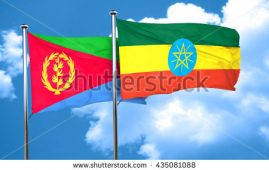(Javier Blas)
Ethiopia has become the poorest country ever to tap the global sovereign bond market, paying a relatively low yield of 6.625 per cent for its maiden $1bn note.
The pricing, announced on Thursday, shows how years of ultra-lax monetary policy in the US, Europe and Japan is allowing countries on the fringes of the frontier market category to tap the international capital market at relatively low cost.
With a GDP per capita of less than $550 a year, Ethiopia is poorer than previous marginal frontier African issuers including Rwanda and Mozambique.
The debut sees one of the biggest, most closed — and, some observers say, most promising — African nations joining a number of other countries in the region that have issued similar bonds in the past five years. Africa has become a magnet for pension funds, insurers and sovereign wealth funds seeking higher-yielding assets.
The price paid by Ethiopia is similar to the yield the US and other leading economies were paying to investors as recently as 2000, before benchmark interest rates plunged during the global financial crisis.
“Pricing at a 6-handle is very attractive” for the country, said Nick Samara, an Africa-focused banker at Citigroup in London, echoing a widely held view.
Ethiopia is paying roughly the same as Zambia and less than a full percentage point more than Kenya, whose 10-year bond was on Thursday trading at 5.88 per cent. Kenya has a much higher GDP per capita than Ethiopia and more robust finances.
Kevin Daly, senior portfolio manager at Aberdeen Asset Management, said the bond’s yield “is decent value for the deal given the limited knowledge and different nature of the Ethiopian economy and the challenges it faces compared to these countries”.
Claudia Calich, emerging market bond fund manager at M&G said Ethiopia was one of the region’s weaker credits. “I am concerned over lack of transparency and levels of SOE [state owned enterprise] debt,” she said.
Bankers said investors piled into the bond, with orders of more than $2.6bn for a note of just $1bn. Investors put aside concerns about Ethiopia, which in the 108-page bond’s prospectus warned about hazards including the potential for war, food shortages, political unrest and thin foreign exchange reserves.
Mark Bohlund, senior economist for sub-Saharan Africa at consultants IHS, said investors were attracted to Ethiopia on the back of “strong economic growth prospects and limited external indebtedness”. But he added: “We wish to highlight that there are still non-negligible risks to repayment.”
Ethiopia’s Achilles heel is its thin cushion of hard currency. The country’s foreign exchange reserves cover only 2.2 months’ worth of imports — almost half the 4.3 months it had in 2010-11 and significantly less than its neighbours.
In its prospectus, the government warned investors that “it may not be possible for the National Bank of Ethiopia to manage the exchange rate as effectively in the future as it has in the past” because of reduced hard currency reserves. “Failure to manage a steadily depreciating exchange rate may adversely affect Ethiopia’s economy . . . [and its] ability to perform obligations” under the bonds, it stated.
The bond also includes new “anti-vulture” clauses recently promoted by organisations including the International Capital Markets Association intended to make it more difficult for investors to hold out against restructuring plans if the country defaults on its debt.
JPMorgan and Deutsche Bank arranged the bond while Lazard advised the government of Ethiopia.
********
Source: Financial Times, Dec. 5, 2014.





